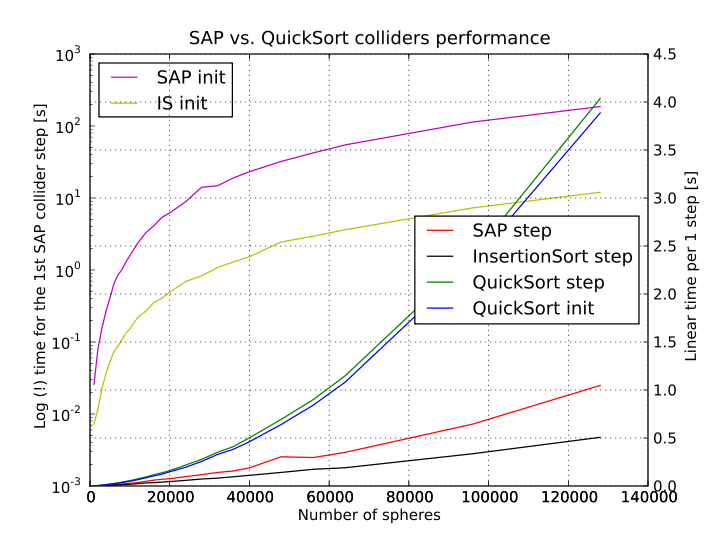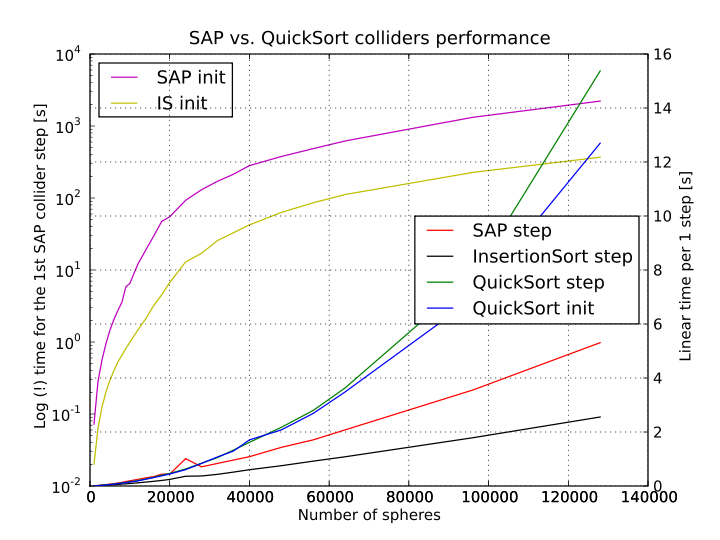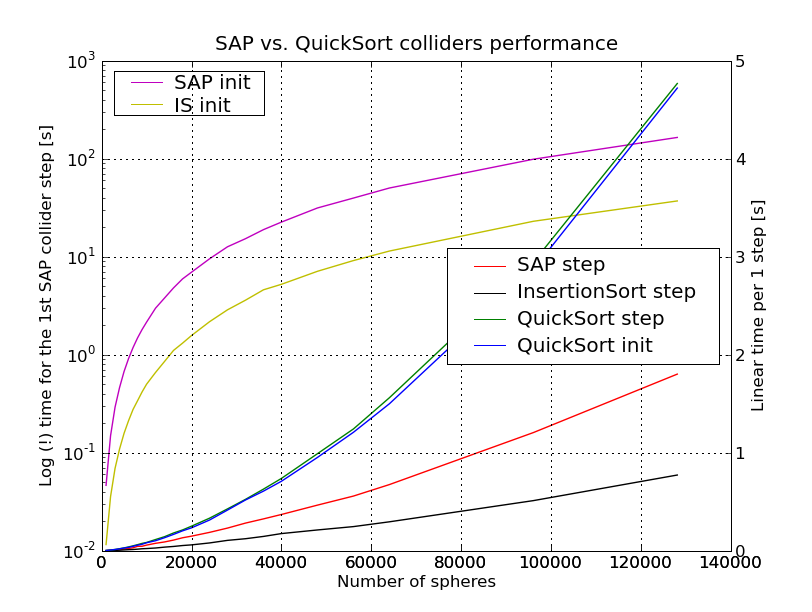Colliders performace
From Yade
Results
This graph shows
- "init": time for the first step
- "step": average time for next 100 steps (normalized per step)
- I had to put time for first step of PersistentSAPCollider to log scale.
- Machine: Intel i7 2.7GHz, DDR3 RAM
- SpatialQuickSortCollider scaled with N^2 and is (significantly) slower, especially for big packings; the initial step is not significantly longer that regular step.
- PersistentSAPCollider scales with something over N×log N. The first step is significantly slower than the next ones.
- InsertionSortCollider scales the same as PersistentSAPCollider, but in absolute numbers is about 50% faster in regular steps and over 10x (!!) faster on the initial step.
Running
$ cd examples/collider-perf $ export OMP_NUM_THREADS=1 # to make sure, for openMP-enabled builds $ yade-trunk-opt-multi perf.table perf.py $ python mkGraph.py *.log
Other machines
- Machine: AMD Athlon(tm) XP 2100+, 1.7GHz
- Machine: Intel(R) Xeon(R) CPU E5410 @ 2.33GHz
TODO (post your graphs here, with machine description)


